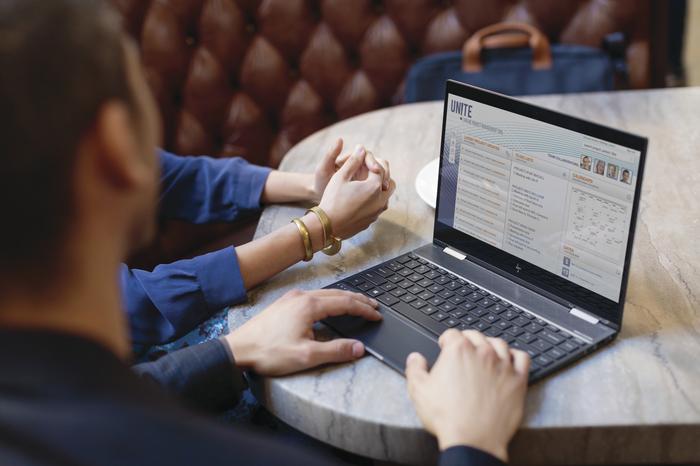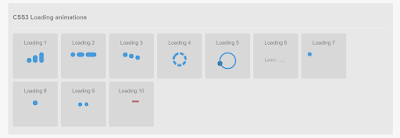The top things to consider when buying a new laptop - Part 1
The top things to consider when buying a new laptop !!
Here’s what to look for if you want to buy the best laptop possible.
Which laptop should you buy isn’t a question with a clear obvious answer. No matter your price category, there are simply too many different types of laptops to choose from. More to the point, there is no single best laptop because there is no single kind of laptop user.
So when people ask us which laptop or laptop brand is the best, we don't give them an easy answer. We give them a list. A set of criteria that everyone should consider before splurging on a new device.
1. Size
When it comes to laptops, size matters.
Depending on what you plan to be doing with your next laptop, you’ll want to make sure you pick the size that’s the right fit for you. Size isn’t like the RAM or ROM of a laptop, you can’t upgrade it later. You’re locked into whatever you select up-front, so choose wisely.
Laptops sizes tend to start at 11.6-inches and go all the way up to 17.3 inches. Most brands and OEMS like HP, Dell, ASUS and Acer tend to offer three display sizes - 13.3-inch, 15.6-inch and 17.3-inches. However, some vendors do sell laptops that fall outside these sizes including 11.6-inches, 12.5-inches and 14-inches.
Obviously, if portability is your priority, you’ll want to go for a smaller sized Windows laptop. They tend to be thinner and lighter than their larger counterparts. Look for laptops that have a screen that is either 12.5-inches or 13.3-inches in size, and a weight between 1kg and 1.5kgs.
The most important thing to consider here when looking for the best laptop you can buy is that you think about what you’re going to need that laptop to do. It’s rarely ever a case of one size fits all. Some users need something lighter and more portable. Other users need discrete graphics for things like video editing or running high end games. If you need a PC with an optical drive or long battery life, you’ll almost certainly have to look for something larger.
2. Screen quality
Since you’ll probably end up staring at your laptop screen hours at a time, you’ll probably want to make sure you get a screen that is comfortable to look at and use.
To start with, you’ll have to consider whether you want your next laptop to have a touchscreen. These days, touchscreens are very common and they can make some tasks easier than others. Unfortunately, they can also add a glossiness to the display which is sometimes undesirable. Glossy screens lead to reflections, which are a definite negative if you’re gaming, watching content or editing images and video content. For these reasons, you might want to consider a laptop that doesn’t have a touchscreen.
To start with, you’ll have to consider whether you want your next laptop to have a touchscreen. These days, touchscreens are very common and they can make some tasks easier than others. Unfortunately, they can also add a glossiness to the display which is sometimes undesirable. Glossy screens lead to reflections, which are a definite negative if you’re gaming, watching content or editing images and video content. For these reasons, you might want to consider a laptop that doesn’t have a touchscreen.
Next up, be sure to look at the resolution on any laptop you’re thinking of buying. A 1920x1080-pixel resolution (Full HD) should be considered if you want plenty of space to line up windows and keep things in view.
Select modern laptops also now offer 4K resolutions. However, these high-end display panels are generally a costly add-on to an already-expensive product. They're only really going to be worth it for those who really need them, like content creation professionals.
Photographers and videographers will also want to privilege laptops that offer better color accuracy and support wider color gamut and HDR standards over those that don't.
Select modern laptops also now offer 4K resolutions. However, these high-end display panels are generally a costly add-on to an already-expensive product. They're only really going to be worth it for those who really need them, like content creation professionals.
Photographers and videographers will also want to privilege laptops that offer better color accuracy and support wider color gamut and HDR standards over those that don't.
Meanwhile, if you’re a gamer, it’s also worth taking the time to check the refresh rate on the display of any potential laptop. A faster refresh rate can often provide a sometimes provide a competitive advantage in online games, as it enables a smoother and more responsive play experience.
Lastly, viewing angles are extremely important. A laptop screen that touts IPS (in-plane switching) technology offers the widest viewing angles and the best user comfort. Chances are you’re not always going to be using your laptop in its natural habitat, so a laptop with an IPS display is usually preferred over the opposite.
If possible, take the time to go into a store and see the screen for yourself. Otherwise, rely on multiple reviews to get a good overview of the product and whether or not its screen will be able to suit your needs.
Lastly, viewing angles are extremely important. A laptop screen that touts IPS (in-plane switching) technology offers the widest viewing angles and the best user comfort. Chances are you’re not always going to be using your laptop in its natural habitat, so a laptop with an IPS display is usually preferred over the opposite.
If possible, take the time to go into a store and see the screen for yourself. Otherwise, rely on multiple reviews to get a good overview of the product and whether or not its screen will be able to suit your needs.
3. Keyboard quality
For long typing sessions, you’ll need to get a laptop that has a comfortable keyboard. You don’t want to get a keyboard that packs in every key under the sun (think keyboards that have squished in number pads) because that can translate to a poor overall user experience when hunting for specifics like the arrow or delete keys.
You want a keyboard that has a comfortable layout with full-sized keys and some space around the arrow keys. The keys should have adequate travel on the downstroke and snappy responsiveness when you let them go.
Make sure the keyboard is also backlit, so that you can type with an easier view on the keys in dimly lit environments.
As with the screen, it helps to try before you buy, especially if your main task will be typing.
Make sure the keyboard is also backlit, so that you can type with an easier view on the keys in dimly lit environments.
As with the screen, it helps to try before you buy, especially if your main task will be typing.
4. CPU
It’s hard to go past any of Intel’s Core-based CPUs when buying a new laptop. Think Core i3, Core i5, and Core i7. An Intel Core Processor offer the best performance when it comes to multitasking and multimedia tasks. Core i3-based notebooks are generally found in entry-level systems, while Core i5 makes up the majority of mainstream computers.
Core i7-based systems are for those of you who want the best performance from your laptop. However, note that with a Core i7-based system, heat coming through the base of the laptop can be cause for concern, especially if you plan to actually use the laptop on your lap a lot of the time.
Some larger laptops also now incorporate Intel's i9 Core processors. Laptops running on i9 Core processors are even more powerful than laptops running on i7 Core processors. They're able to rival desktops for performance but they do come with a significantly-higher cost than a laptop with an i7, i5 or i3 Core Processor.
Select vendors now also offer laptops and notebooks that run on AMD’s Ryzen Mobile CPUs. If you’re a gamer, this can be a particularly compelling option worth considering. Ryzen Mobile CPUs tend to be paired with AMD’s own Vega graphics chipsets, which are currently far better for gaming than Intel’s own onboard graphics.
Select vendors now also offer laptops and notebooks that run on AMD’s Ryzen Mobile CPUs. If you’re a gamer, this can be a particularly compelling option worth considering. Ryzen Mobile CPUs tend to be paired with AMD’s own Vega graphics chipsets, which are currently far better for gaming than Intel’s own onboard graphics.
5. RAM
In the old days, you rarely needed more than 4GB of RAM or more to get the best out of your system.
These days, you’ll probably want to think about 8GB as a minimum. If you’re a power-user, 16GB is the way to go. Meanwhile, gamers should look at dialing things upwards all the way to 32GB if they want the best experience.
More RAM allows for more applications to be run at the same time, and for more data to be quickly accessible by the system at any one time, which comes in handy for tasks such as editing photos or video content.
These days, you’ll probably want to think about 8GB as a minimum. If you’re a power-user, 16GB is the way to go. Meanwhile, gamers should look at dialing things upwards all the way to 32GB if they want the best experience.
More RAM allows for more applications to be run at the same time, and for more data to be quickly accessible by the system at any one time, which comes in handy for tasks such as editing photos or video content.
For more this type of content or If you want to know amazing facts , tricks ,tips about technology or you want to learn coding then follow
coder__bhai on instagram







Comments
Post a Comment